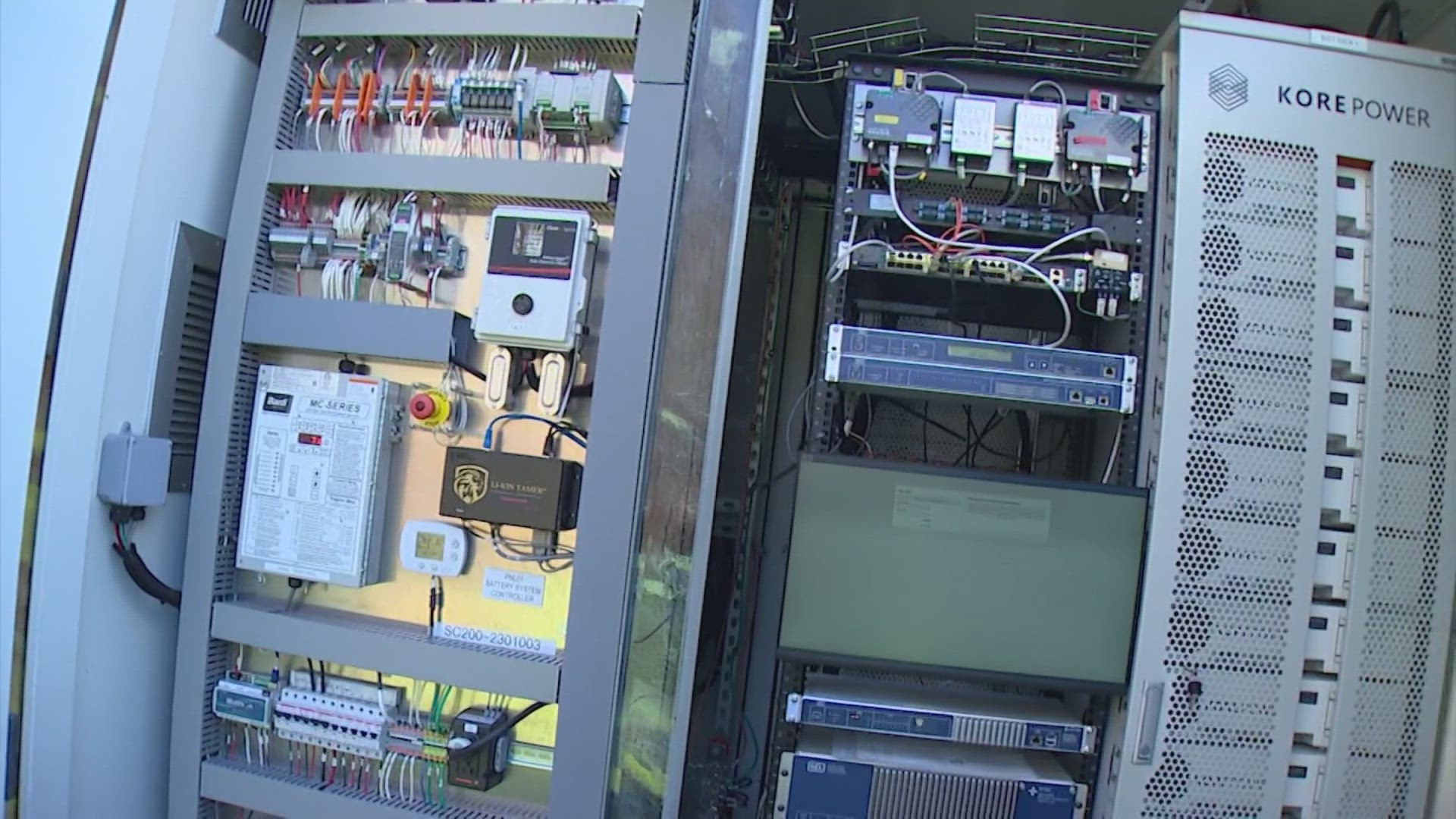SAMISH ISLAND, Wash — Coffee is what keeps Molly Pavia and her husband Bob powered up throughout the day.
But when the electricity goes down, the coffee maker won't run, and problems in their remote Skagit County community go up.
"If it's in the winter, it gets cold," Bob Pavia said. "Part of what we're concerned about is the stuff in our refrigerators and freezers going bad."
Samish Island, in western Skagit County, is susceptible to high winds that often topple trees and take down power lines - sometimes for days.
The problem is so pervasive the volunteer fire department, which does not have a permanent generator, may not be able to turn on the lights or open its electric doors.
"If we're spending 10 minutes trying to get a door open, then we're not going to a person's house, and the first 10 minutes of a fire is the most important time," said chief Mike Collins.
Another set of doors on fire department property is unlocking a solution to the problem.
A large steel enclosure holds three massive lithium-ion batteries that are powered by nearby solar panels. Together, they create a Puget Sound Energy (PSE) "microgrid" that provides electricity when the power goes out.
Energy stored in the batteries now supplies backup power to the fire station and three homes.
The reserves stored ease the strain on the main grid during high-use times like cold snaps and summer heatwaves.
PSE has two additional communities in Thurston County expected to be online by 2025 - one of which is capable of providing backup power to 250 homes.
In addition to those two neighborhood projects, PSE said it's bringing 10 more microgrids to Washington that will store and distribute power.
"In looking at this technology we ask, how do we make power outages invisible to our customers?" said Aaron August, PSE's senior vice president and chief customer and transformation officer. "You do that by being a utility where you don't really experience power outages anymore because you have systems like these working in the background."
Bob Pavia helped spearhead the project with PSE. It's part of a 10-year experiment to see how well the technology performs and where else it can be deployed.
The experiment is already working, according to Bab Pavia.
"There was about a four-hour outage in January," Bob Pavia said. "The system kicked in and we didn't even really notice."

